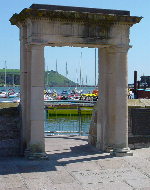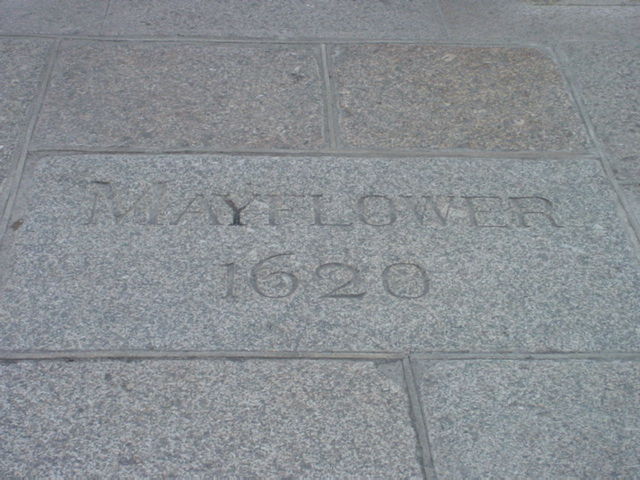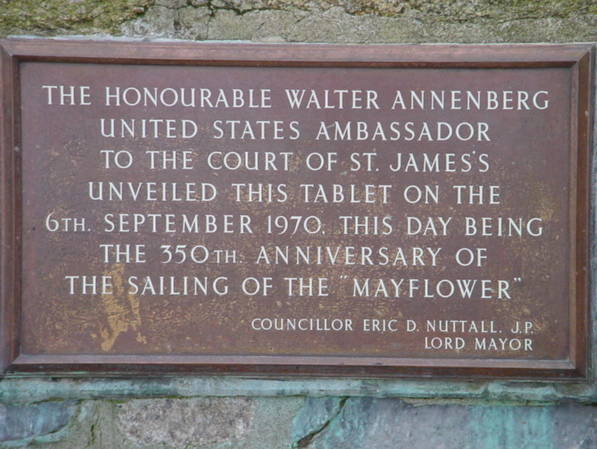Welcome to Mayflower Steps, if you’ve come here looking for information about that fêted vessel, its Pilgrim Father and families passengers, or Plymouth, the port from which it sailed, then you’re at the right place! You’ll find a a detailed account of the Mayflower ship, its ties to Plymouth Barbican, the journey, its passengers, and much more. We hope you enjoy your visit and look forward to seeing you at the Mayflower Steps in the real world.
Plymouth, the perfect holiday and gateway destination!
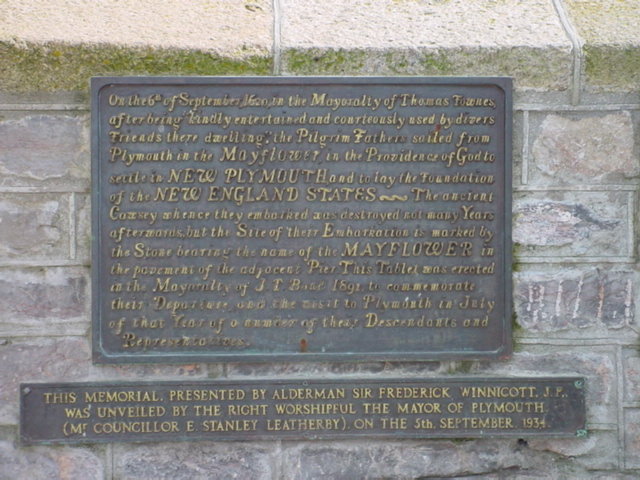
Plaques read:
On the 6th of September 1620, the Mayorality of Thomas Townes after being kindly entertained and courteously used by divers Friends there dwelling, the Pilgrim Fathers sailed from Plymouth in the Mayflower in the Providence of God to settle in New Plymouth and to lay the foundations of the New England States The ancient Cawsey whence they embarked was destroyed not many Years afterwards but the Site of their Embarkation is marked by the Stone bearing the name of the MAYFLOWER in the pavement of the adjacent Pier.
This Tablet was erected in the Mayoralty of J T Bond 1891, to commemorate the Departure, and the visit to Plymouth in July of that Year of a number of their Descendants and Representatives
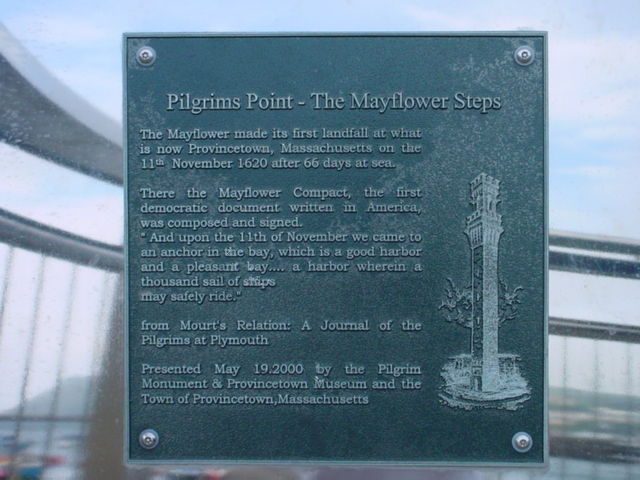
Plaque reads:
The Mayflower made its first landfall at what is now Provincetown, Massachusetts on the 11th November after 66 days at sea.
There the Mayflower Compact, the first democratic document written in America, was composed and signed.
“And on the 11th November we came to an anchor in the bay, which is a good harbour and a pleasant bay…. a harbour wherein a thousand sail of ships may safely ride.”
from Mourt’s Relation: A Journal of the Pilgrims at Plymouth
Presented May 19, 2000 by the Pilgrim Minument and Provincetown Museum and the town of Provincetown, Massachusetts
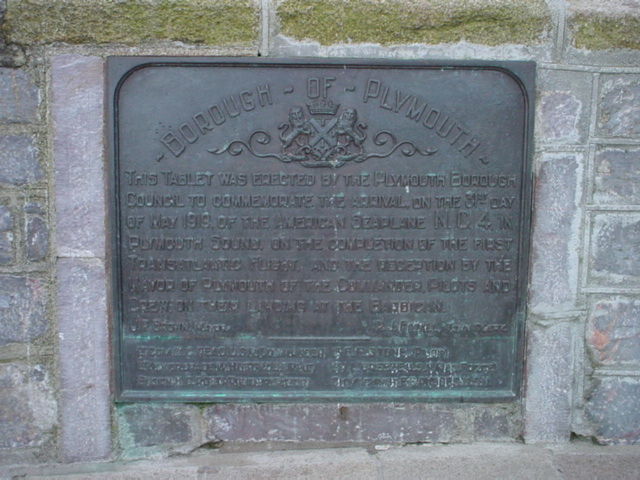
Plaque reads:
This tablet was erected by the Plymouth Borough Council to commerorate the arrival on the 31st day of May 1919 of the American seaplane N.C.4 in Plymouth Sound on the completion of the first Transatlantic Flight and the reception by the Mayor of Plymouth of the Commander, Pilots and Crew on their landing at the Barbican

Plaque reads:
From Plymouth On 13th March 1787, sailed the transport ships ‘Friendship’ and ‘Charlotte’ carrying men and women convicts bound for Australia.
On 28th January 1788, with nine other ships from England they landed at Port Jackson, which became Sydney, New South Wales.
There they established the first British Colony under the command of Captain Arthur Phillip, R.N. the father of modern Australia.

Plaque reads:
Plymouth Men Who Helped To Found Modern Australia
Captain Tobias Furneaux charted the coast of Tasmania, and in 1773 became the first Englishman to land there.
Captain John MacArthur gave Australia prosperity through his introduction of marino sheep in the 1790s.
Captain William Bligh survived the mutiny aboard the Bounty to become governer of New South Wales 1806-1809.
Colonel George Arthur was Lieutenant Governor of Tasmania 1823-1836.
Major Edmond Lockyer raised the British flag in Western Australia in 1827.
Both Furneaux and Bligh accompanied Captain James Cook on the second of his three great voyages of discovery, all of which left from Plymouth, in 1768, 1772, and 1776.
Unveiled by His Excellency Mr. Richard Smith, The Australian High Commissioner 8th September 1992.
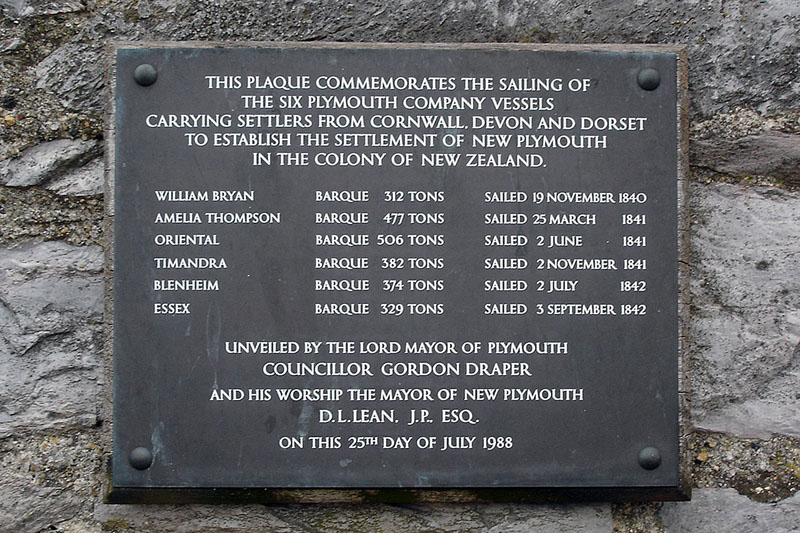
Plaque reads:
This plaque commemorates the sailing of the six Plymouth Company vessels carrying settlers from Cornwall, Devon, and Dorset to establish the settlement of New Plymouth in the colony of New Zealand.
| William Bryan | barque 312 tons | Sailed 19 November 1840 |
| Amelia Thompson | barque 477 tons | Sailed 25 March 1841 |
| Oriental | barque 506 tons | Sailed 2 June 1841 |
| Timandra | barque 382 tons | Sailed 2 November 1841 |
| Blenheim | barque 374 tons | Sailed 2 July 1842 |
| Essex | barque 329 tons | Sailed 3 September 1842 |
Unveiled by the Lord Mayor of Plymouth Councillor Gordon Draper and his Worship the Mayor of New Plymouth D.L.Lean. J.P., esq. on this 25th Day of July 1988

